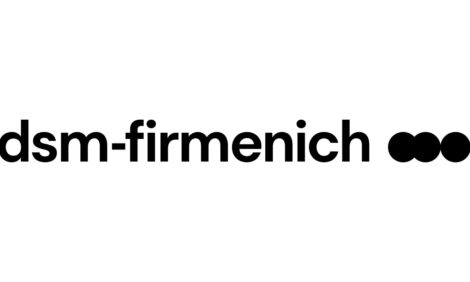



A Paradigm Shift: Feed and Fuel
US - Increased input costs are having widespread effects across agriculture. Growing world demand for feed ingredients used in meat, egg and milk production, combined with utilisation of grains for fuel production in the US, have permanently raised animal feed ingredient costs, according to Diamond V.The US Commercial Egg Industry experienced all-time high feed costs in 2012. The average commercial layer feed price, as a result of the 2012 drought and pre-harvest speculation, hit a record high in August 2012, exceeding $371.00 per ton1.
| August 2012 | Ingredient Prices | Diet Composition | Other Cost | Total Feed Cost | ||||||
|---|---|---|---|---|---|---|---|---|---|---|
| Corn ($/ton) | SBM ($/ton) | Corn 67% | SBM 22% | Calcium 8% | Other 3% | Transport ($/ton) | Milling ($/ton) | ($/ton) | $/cwt. | |
| S. Atlantic | 321.31 | 608.00 | 215.28 | 133.76 | 3.2 | 12.6 | 3.00 | 10.00 | 377.84 | 18.89 |
| N. Atlantic | 316.12 | 576.15 | 211.8 | 126.75 | 3.2 | 12.6 | 3.00 | 10.00 | 367.84 | 18.37 |
| Midwest | 289.46 | 557.25 | 193.94 | 122.60 | 3.2 | 12.6 | 3.00 | 10.00 | 345.34 | 17.27 |
| S. Central | 312.76 | 551.17 | 209.55 | 121.26 | 3.2 | 12.6 | 3.00 | 10.00 | 359.60 | 17.98 |
| California | 354.10 | 589.25 | 237.25 | 129.64 | 3.2 | 12.6 | 3.00 | 10.00 | 395.68 | 19.78 |
| N. West | 335.22 | 589.08 | 224.6 | 129.60 | 3.2 | 12.6 | 3.00 | 10.00 | 382.99 | 19.15 |
| US Avg. | 321.50 | 578.48 | 215.4 | 127.27 | 3.2 | 12.6 | 3.00 | 10.00 | 371.47 | 18.57 |
| 1 September 2012 Layer Feed Price and Cost: Issue #32, M. Ibaruru and D. Bell, Egg Industry Center | ||||||||||
Chris Hurt, PhD (Purdue University) projects we will experience elevated ingredient prices through 2013, with corn prices ranging between $7.20 and $8.60 per bushel, and soybean meal averaging $490.00 per ton. This abnormal price spike will be short-lived as production adjustments are implemented. Aside from this immediate cost increase, we must also realize the effective base line for all feed ingredient cost for 2014 and beyond has shifted higher; corn prices are projected to remain between $5.00 and $6.00 per bushel, and soybean meal is likely to average $350.00 per ton2. As the US commercial egg industry re-equips itself for the 21st century, the reality of higher feed cost and the necessity for maximum feed efficiency will generate increased pressure on profitability.
| Corn: USDA (million bushels as of 9/12/2012) | |||||
|---|---|---|---|---|---|
| Production Cycle | 09/10 | 10/11 | 11/12 | 12/13 | 13/14 (Hurt) |
| Beginning Inv | 1,673 | 1,708 | 1,128 | 1,181 | 733 |
| Production | 13,110 | 12,447 | 12,358 | 10,727 | 14,201 |
| Total Supply | 14,791 | 14,182 | 13,511 | 11,983 | 14,959 |
| Feed & Residual | 5,166 | 4,792 | 4,400 | 4,150 | 5,100 |
| FSI Non-fuel | 1,370 | 1,406 | 1,390 | 1,350 | 1,435 |
| FSI Fuel | 4,560 | 5,021 | 5,000 | 4,500 | 5,200 |
| Export | 1,987 | 1,835 | 1,540 | 1,250 | 1,800 |
| Total Use | 13,083 | 13,054 | 12,330 | 11,250 | 13,535 |
| Ending Inv | 1,708 | 1,128 | 1,181 | 733 | 1,424 |
| US Farm Price | $3.55 | $5.18 | $6.25 | $7.20-8.60 | $5.00-$6.00 |
| Soybeans: USDA (million bushels as of 9/12/2012) | |||||
|---|---|---|---|---|---|
| Production Cycle | 09/10 | 10/11 | 11/12 | 12/13 | 13/14 (Hurt) |
| Beginning Inv | 138 | 151 | 215 | 130 | 115 |
| Production | 3,359 | 3,329 | 3,056 | 2,634 | 3,198 |
| Total Supply | 3,512 | 3,495 | 3,286 | 2,784 | 3,313 |
| Seed & Residual | 108 | 132 | 91 | 114 | 120 |
| Crush | 1,752 | 1,648 | 1,705 | 1,500 | 1,650 |
| Export | 1,501 | 1,500 | 1,360 | 1,055 | 1,350 |
| Total Use | 3,361 | 3,280 | 3,156 | 2,669 | 3,120 |
| Ending Inv | 151 | 215 | 130 | 115 | 193 |
| US Farm Price | $9.59 | $11.30 | $12.45 | $15.00-$17.00 | $10.50-$12.50 |
| Soybean Meal | $311.00 | $346.00 | $397.00 | $490.00 | $325-$375 |
| 2 2013 Feed Outlook Chris Hurt, Purdue University. United Egg Producers Meeting, San Diego, California, 11 October 2012 | |||||
The increased pressure from higher feed cost is coupled with a reduction in hen densities as the industry moves to enriched cages for egg laying hens. Following several divisive individual state animal welfare ballot referendums requiring alternative housing configurations and reduced hen densities, United Egg Producers (UEP) and the Humane Society of the United States (HSUS) negotiated and proposed HR 3798 legislation for the 112th US Congress. This legislation details a timetable for changing the cage configuration and density requirements for egg production in the United States. The timetable detailed below is assuming 1 January 2013 implementation, and is for white layers only. Cage densities will be increased and phased in over time, going from 67 square inches per hen in 2012 to 124 square inches per hen by 2030. Cage configuration changes must also be phased in, with 25 per cent of all hens in enriched housing by 2019, and 55 per cent by 2026. By 2030, all systems must be an enriched configuration with 124 square inches per hen3.
Implementation timeline

25% Phase in requirement, 55% Phase in requirement, 100% Phase in requirement
3 *Minimum requirements for white hens, in square inches, assuming January I, 2013 implementation
E – when enriched cages are required
Agralytica, Economic Impacts of Converting to Enriched Cage System. Prepared for united Egg Producers.
How will the new housing regulations impact egg producers? As the commercial egg industry moves to alternative cage configurations, research is under way by Dr Hongwei Xin at Iowa State University assessing aviary laying-hen houses and aviaries.
This study has three objectives: 1) measure gaseous and particulate matter concentrations and emissions in aviary houses, 2] measure metabolic rate or heat production at the house level and 3] monitor electricity use for lighting, building ventilation, manure-drying, and total operation; and monitor fuel use for supplemental heating.
One significant fact pulled from Dr. Xin’s research indicates that production (BTU/hr-lb BW) generated from every 10,000 birds is equivalent to 25,000BTU per hour space heater.4 It is important to realize that our current enrichable houses with 400,000 hens at 2012 densities will be reduced to 200,000 hens as the cages are enriched by 2030. As hen densities are reduced, house temperatures will decrease, air quality will be challenged and increasing feed intakes will require supplemental heat to maintain efficiencies. Although the supplemental heat requirement is non-linear, additional heat will be needed, based upon the temperate zone, to manage an increasing feed cost.
| Heat Production (BTU/hr – lb BW) | |||||||||
|---|---|---|---|---|---|---|---|---|---|
| Total Heat Production | Latent Heat Production | Sensible Heat Production | |||||||
| Light | Dark | TWA | Light | Dark | TWA | Light | Dark | TWA | |
| Mean | 9.6 | 6.8 | 8.7 | 3.1 | 2.4 | 2.8 | 6.5 | 4.4 | 5.8 |
| SE | 0.16 | 0.17 | 0.14 | 0.06 | 0.05 | 0.05 | 0.12 | 0.12 | 0.12 |
| TWA = time weighted average About every 10,000 birds is equivalent to a 250,000 BTU/hr space heater About every 740 hens produce 1 gallon of water per hour (~68 gal/hr of H2O for 50,000 hens) 4 A Comprehensive Assessment of Aviary Laying-Hen Housing System in the Midwest, Hongwei Xin, Morgan Hayes, Hong Li, Tim Shepherd, Yang Zhao, Maro Ibarburu, Suzanne Millman, Rebecca Parsons, Byron Brehm-Stecher and Hyun Joong Kim, Iowa State University as presented at the Iowa Poultry Association Fall Festival in Okoboji, IA, 20 September 2012. |
|||||||||
Summary
Feed prices are currently at record highs resulting from a combination of increasing world feedstuff demand and lower than anticipated grain yields from an upper Midwest drought in the United States. Although near-term production increases should mitigate the shortage, world demand will keep grain prices elevated in the near term.
With increased pressure from consumer groups and animal welfare considerations, the US commercial egg industry is moving to lower density housing. Although the UEP/HSUS legislation has not yet received congressional approval, the road to a compromise is under way. This legislation effectively decreases hen densities in order to preserve sanitary housing configurations.
With hen densities reduced in half, cooler housing temperatures and higher feed intakes, especially in the northern states, impose increased economic pressure on profitability.
Research from Iowa State validates that supplemental heat will be needed to manage feed intake. With US natural gas production at record levels, due to fracking in the upper Midwest, supplemental heat will most assuredly be less expensive than elevated feed intake.
As the industry re-tools for enriched cage production, supplemental heating systems should be evaluated. With increasing feed cost and a reduction in hen densities, the net result is a paradigm shift in production cost requiring feed and fuel to maintain feed conversion at near 2012 levels.








